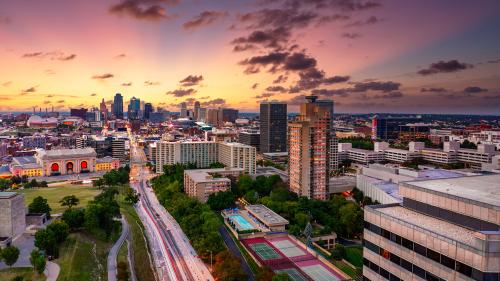Leadership changes in Argentina and its capital city of Buenos Aires in December 2015 marked the beginning of a significant political moment for urban governance and innovation. With the former mayor of Buenos Aires, Mauricio Macri, now Argentina’s president and his former chief of staff, Horacio Rodriguéz Larreta, now the current mayor, for the first time in modern history the leadership of the country and its capital are aligned and focused on maximizing the potential of this metro region of more than 12 million people.
When we recently visited Buenos Aires, we found local leaders committed to economic transformation, governance reform, and global integration. It was especially evident in efforts, begun under the Macri mayoralty, to address spatial inequality through investments in the historically underserved southern half of the city.
The southwestern neighborhood of Parque Patricios Distrito Tecnológico, is the posterchild for these efforts. Historically challenged by a lack of transit connections, commercial activity, and security, the area was designated a “creative district” in 2008 and has recently benefited from key public investment efforts like commercial tax relief through 2034, a city Subte subway station, the Ecobici bike share system, and a host of publicly supported programs for entrepreneurs and residents. Two hundred forty businesses—a mix of software companies and major global consultancies like Tata, Accenture, and Deloitte—now call the neighborhood home. The district also houses a campus of Instituto Tecnológico Buenos Aires (ITBA), the prestigious engineering university, and other university extensions are in the works.
In perhaps the biggest development to date, in 2015 the mayor’s office and its 1,200 city employees relocated from the city center to Parque Patricios, a signal of the government’s desire to invest in the south. The Norman Foster + Partners-designed building is filled with light and young staffers, many of whom are new to government service. The government presence anchors a district filling with the types of industries likely to attract talented workers who have traditionally looked for opportunities outside of the country.
The city’s investments have led to clear wins. The relocation of several hundred tech-oriented companies to the district constitutes a critical mass of innovation drivers focused on developing cutting-edge technologies, products, and services. Improvements in public safety and transit have benefited the 12,000-14,000 workers who spend their weekdays in Parque Patricios as well as its longtime residents. And the neighborhood is capitalizing on its enviable building stock of historic and renovation-friendly spaces, the kind of architecture being revalued in cities all over the world.
But the full potential of the district is yet to be realized. There are fewer restaurants and amenities than most would like, evidenced by the fact that few people stay in the neighborhood to socialize after the workday is over. Knitting together the physical fabric of the neighborhood will require the replacement of fences, walls, and other barriers with connecting elements such as bike paths, sidewalks, and pedestrian-oriented streets. Vibrant public spaces like the Parque Patricios itself could be programmed to attract more residents and commuters and encourage them to exchange ideas.
Digital signs display each company’s place in the history of the district. This sign represents CDM, the largest digital media company in Argentina and the sixth to settle in Parque Patricios.
Intermediary institutions could improve the district’s innovation ecosystem. Incubators facilitating research commercialization and startups would help ensure that businesses not only locate in the district but get their start there. Beginning with the city’s plan for widespread public access to wi-fi, public places could become more digitally accessible. There is potential to use the district as a test bed for connected city technologies such as data-collecting street lights, waste collection, traffic management tools, and sensors to monitor air quality, water flows, and electricity use.
In Parque Patricios, many of the building blocks for equity-driven district-level revitalization are firmly in place. If the Macri administration can stabilize the national economy and promote business-friendly reforms at the federal level and the Larreta administration can build on established economic development and community improvement strategies, Buenos Aires has great potential to build on its competitive position as a gateway to growing Latin American urban markets. This position will help the city reclaim a place among the world’s most dynamic urban economies, and do so in a way that benefits the local people and places that need it most.
The Brookings Institution is committed to quality, independence, and impact.
We are supported by a diverse array of funders. In line with our values and policies, each Brookings publication represents the sole views of its author(s).









Commentary
In Buenos Aires, a city commits to a long-neglected neighborhood
July 27, 2016